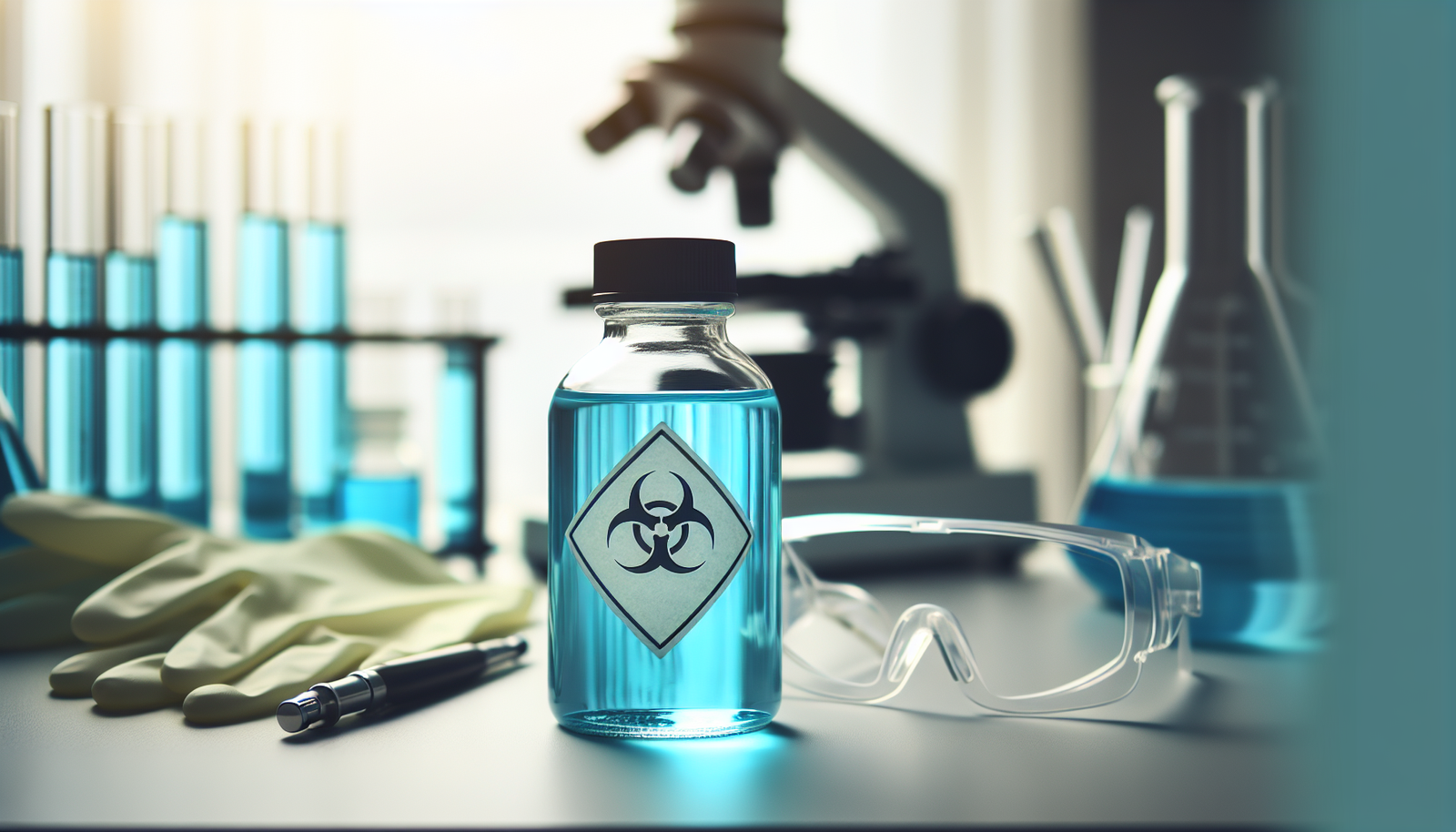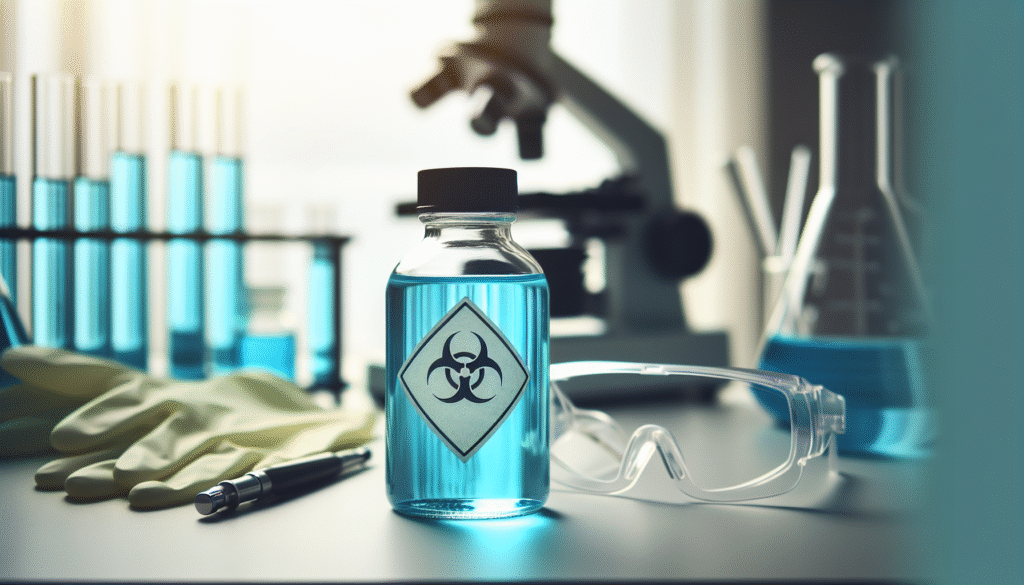
Have you ever wondered how to handle chemical substances safely, specifically Methylene Blue? Proper storage and handling practices for chemicals like Methylene Blue are crucial for ensuring safety, regulatory compliance, and the preservation of chemical integrity. This guide outlines essential tips for you to follow when working with this compound.
Understanding Methylene Blue
Methylene Blue is a synthetic dye that serves various purposes, from being a staining agent in biological research to treating certain medical conditions such as methemoglobinemia. Its versatility comes with responsibilities, especially regarding how you store and handle it.
Properties of Methylene Blue
Methylene Blue is a chemical compound with distinct properties. Understanding these properties can guide you in handling it appropriately.
- Molecular Formula: C16H18ClN3S
- Molar Mass: 319.85 g/mol
- Appearance: Methylene Blue typically appears as a dark blue or greenish powder.
- Solubility: It is soluble in water, making it essential to follow specific protocols for its use and storage.
Given its unique properties, you should remain vigilant about how and where you store Methylene Blue.
Safety Precautions
Before diving into storage techniques, it is vital to address safety precautions. Methylene Blue can cause various health impacts if not handled with care.
Personal Protective Equipment (PPE)
When you work with Methylene Blue, your health must be your priority. Ensure you’re equipped with the following:
- Gloves: Use nitrile gloves to prevent skin contact.
- Goggles: Protect your eyes from splashes.
- Lab Coat: Wear a lab coat to shield your clothing and skin from spills.
- Face Mask: A mask can help avoid inhalation of any harmful particles.
Assessing risks and using appropriate PPE will significantly decrease any potential hazards.
First Aid Measures
Even with precautions in place, accidents can occur. Familiarizing yourself with first aid measures is imperative.
- Skin Contact: Rinse the affected area with plenty of water and remove contaminated clothing. Seek medical attention if irritation persists.
- Eye Contact: Flush eyes with water for at least 15 minutes and seek medical treatment.
- Inhalation: Move the individual to fresh air immediately. Seek medical attention if breathing difficulties arise.
- Ingestion: Rinse the mouth and do not induce vomiting. Contact a physician or poison control center.
Understanding what to do in an emergency is as essential as preventive measures.
Storing Methylene Blue Safely
How you store Methylene Blue directly impacts its usability and your safety.
Storage Conditions
Proper storage conditions enhance the chemical’s stability and safety. Keep these considerations in mind:
- Temperature: Methylene Blue should be stored in a cool, dry place, ideally between 15-30°C (59-86°F). Avoid temperatures that may lead to degradation.
- Light Sensitivity: Protect Methylene Blue from direct sunlight or strong artificial light, as light exposure can lead to photodegradation.
Storage Containers
Selecting appropriate storage containers is crucial for maintaining the integrity of Methylene Blue.
- Material: Use containers made of glass or specific plastics known to be resistant to chemical reactions.
- Sealability: Ensure that containers are tightly sealed to prevent contamination and evaporation.
- Labeling: All containers must be accurately labeled with the chemical name, concentration, and hazard warnings.
Properly selecting and maintaining storage containers can prevent accidental exposures and ensure the longevity of Methylene Blue.
Inventory Management
Keeping an organized inventory will mitigate risks associated with improper handling.
- Check Expiration Dates: Regularly review and discard expired or deteriorated products.
- Tracking Usage: Maintain records of when and how much Methylene Blue is used to anticipate reordering needs and monitor safety.
- Stocking: Store older containers in front of newer ones to use them in order of acquisition.
Managing your inventory effectively not only supports safety but also enhances operational efficiency.

Handling Methylene Blue Safely
How you handle Methylene Blue is just as important as how you store it.
Preparing Solutions
When preparing Methylene Blue solutions, follow stringent procedures to minimize risks.
Dilution
- Choose a Suitable Solvent: Use distilled water or a compatible buffer solution.
- Use Appropriate Concentrations: Always consult a reliable protocol for the required concentration based on your application.
- Add Methylene Blue to Solvent: Always add Methylene Blue to the solvent, not the other way round, to avoid splashing.
Following these steps ensures proper handling and effective usage of the chemical.
Cleanup Protocols
Accidents can happen, but how you respond will determine safety levels.
Spills
- Immediate Response: Contain the spill using absorbent materials.
- Clean Up: Dispose of the contaminated materials in accordance with your institution’s waste disposal guidelines.
- Report: Always notify a supervisor or safety officer to record the incident and assess further risks.
By establishing cleanup protocols, you can maintain a safe working environment and ensure compliance with safety regulations.
Disposal Guidelines
Proper disposal of Methylene Blue protects the environment and complies with legal obligations.
- Check Local Regulations: Familiarize yourself with local, state, and federal disposal guidelines for hazardous materials.
- Chemical Waste Containers: Use designated chemical waste containers with proper labels.
- Collection Services: Consider utilizing a licensed hazardous waste disposal service for proper disposal.
By adhering to disposal guidelines, you contribute to a safer environment and mitigate risks associated with chemical waste.
Understanding Regulatory Compliance
Navigating the requirements dictated by regulatory organizations is essential when dealing with Methylene Blue. Regulatory compliance ensures that you handle and store the chemical within accepted safety parameters.
Safety Data Sheets (SDS)
An SDS is a vital document that provides detailed information about Methylene Blue.
- Hazard Identification: Identify the hazards associated with the compound.
- Composition Information: Understand the chemical makeup.
- Emergency Measures: Review first aid measures and fire-fighting techniques specifically linked to Methylene Blue.
Regularly consulting the SDS for Methylene Blue will ensure you remain informed about safety and handling procedures.
Compliance Organizations
Familiarize yourself with the major organizations that regulate chemicals, including:
- Occupational Safety and Health Administration (OSHA): Sets and enforces workplace safety standards.
- Environmental Protection Agency (EPA): Regulates hazardous substances and manages waste disposal.
- National Institutes of Health (NIH): Provides guidelines specific to the biomedical field, including chemical usage.
Understanding the role of these organizations allows you to maintain compliance and prioritize safety.

Training and Education
Investing in training and education is crucial for anyone handling Methylene Blue. Safety culture begins with informed personnel.
Initial Training
Every individual working with Methylene Blue should undergo initial training that includes:
- Chemical Properties: Understanding what Methylene Blue is and its use cases.
- Safety Protocols: Learning about PPE, emergency procedures, and cleanup protocols.
Ongoing Training
Regular refresher courses should be instituted to keep safety at the forefront.
- Updates on Regulations: New safety regulations emerge, making it important to stay current.
- Review of Incidents: Analyzing past incidents can improve future practices and encourage proactive behavior.
Investing in ongoing training reflects a commitment to safety and enables better handling practices.
Conclusion
Methylene Blue, while versatile, necessitates strict adherence to safety protocols in storage, handling, and disposal. By implementing effective storage methods, complying with regulations, and investing in training, you significantly enhance safety in any working environment. Establishing a culture of safety not only protects you and your colleagues but also fosters a more efficient workplace. Make safety your priority, and become a guardian of responsible chemical handling.